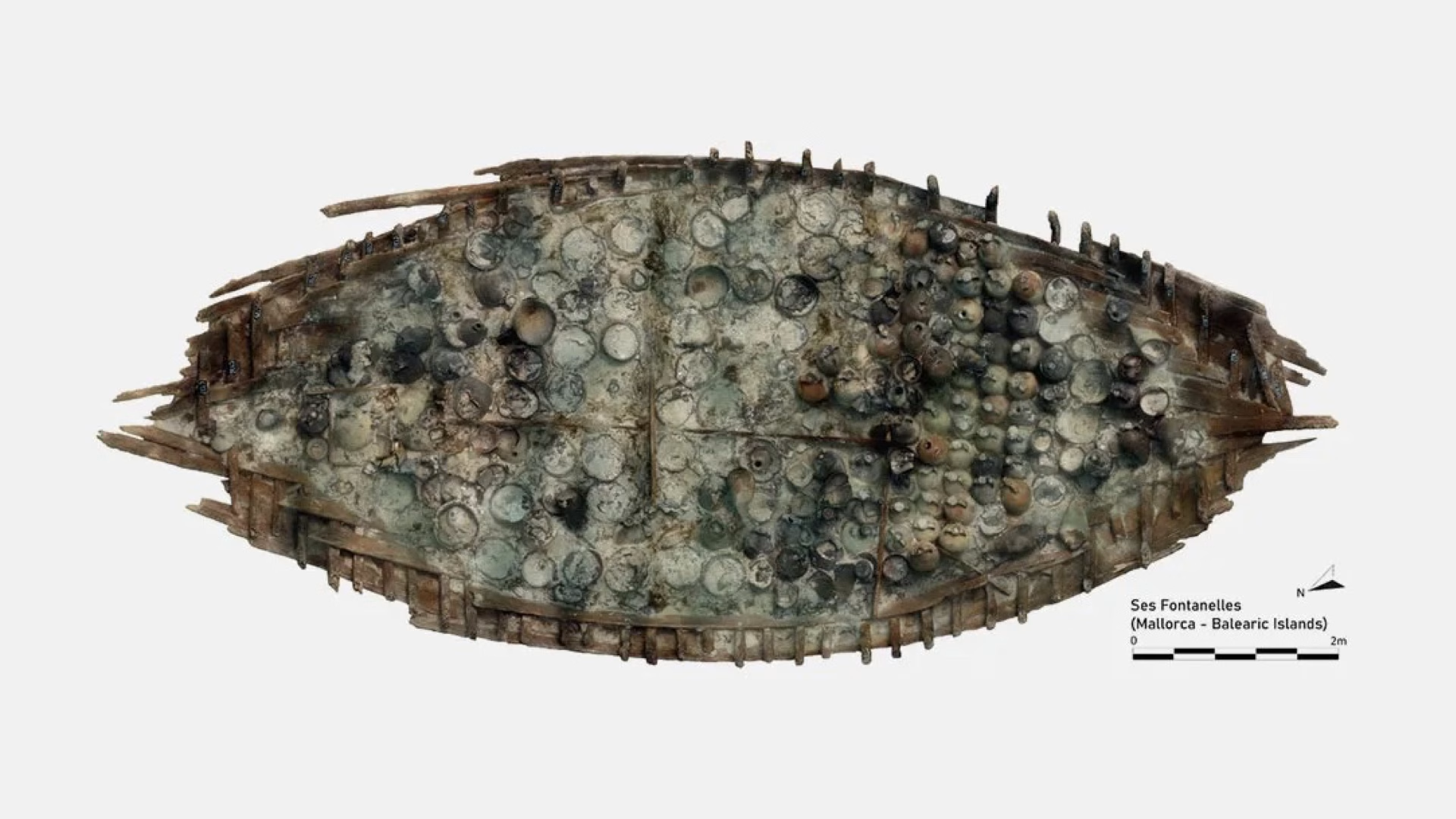In one of the Mediterranean’s clearest coastal waters, off the island of Mallorca, a discovery lying in just two metres of water is poised to reshape everything we know about ancient Mediterranean trade. First spotted by a swimmer in 2019 and preserved for roughly 1,700 years in an oxygen-free pocket of sand, the Ses Fontanelles wreck is scheduled for a major recovery operation beginning in 2026.
This extraordinary find offers unprecedented evidence about the spread of Christianity in the late Roman period, the transformation of Mediterranean trade networks, and the early structures of ancient logistics.

A Natural Archive Buried in Sand
Dated to the mid-4th century CE, the ship – with its 12-metre-long hull – was a typical Roman merchant vessel that likely sank during a routine voyage along established trade routes. What makes it unique is its near-perfect state of preservation, completely isolated from oxygen beneath the sand.
Experts currently regard it as:
→ One of the best-preserved late Roman shipwrecks in the Mediterranean.
Hundreds of details that illuminate the era’s trade practices, product circulation, and producer profiles remain virtually untouched.
More Than 300 Amphorae: A Trade Inventory from Garum to Olive Oil
The more than 300 amphorae recovered from the wreck reveal the astonishing variety of goods traded at the time:
- Garum (fish sauce)
- Olive oil
- Wine
- Probably salted fish and other commodities
The vessel is believed to have sailed from the port of Carthago Spartaria (modern-day Cartagena).
Many of the amphorae bear tituli picti – black-ink inscriptions that functioned like the barcodes of the ancient world:
- Producer information
- Contents
- Tax notes
- Commercial seals
- Early Christian symbols
These markings demonstrate how, in the late Roman Empire, trade, faith, and production were becoming increasingly intertwined.

A Map of Late Roman Belief Hidden in This Ship
It is well known that Christianity was becoming more visible around the Mediterranean in the 4th century. The Ses Fontanelles wreck provides concrete proof:
Among the finds:
- Ceramic seals bearing early Christian symbols
- An oil lamp decorated with the figure of the Roman goddess Diana
- A pair of shoes (one leather, one woven from esparto grass)
- Ropes and plant remains
- A bronze coin dated 320 CE
- A bow drill used for repairs on board
This diversity illustrates the transitional nature of religious belief at the time: Christian symbols were prominently emerging, yet the polytheistic Roman tradition had not yet fully disappeared.

The 2026 Operation: More Than Just Recovering a Wreck – Setting a New Standard
The extraction of Ses Fontanelles will do far more than save one shipwreck; it will establish an international methodology for recovering all ancient wrecks preserved in oxygen-free sand layers.
The project will cement Mallorca’s position as one of the Mediterranean’s leading centres for underwater archaeology while giving fresh momentum to the study of the hundreds of Roman wrecks scattered across the sea.
The teams’ objectives:
→ Disassemble the ship’s components without damage
→ Preserve the amphorae together with their remaining contents
→ Reconstruct the wreck’s structural anatomy
→ Map the late Roman logistical system in unprecedented detail
Whether we would enjoy the taste of that ancient garum today remains a mystery…
But one thing is certain: this discovery is bringing the Mediterranean’s economic and cultural memory vividly back to life.














